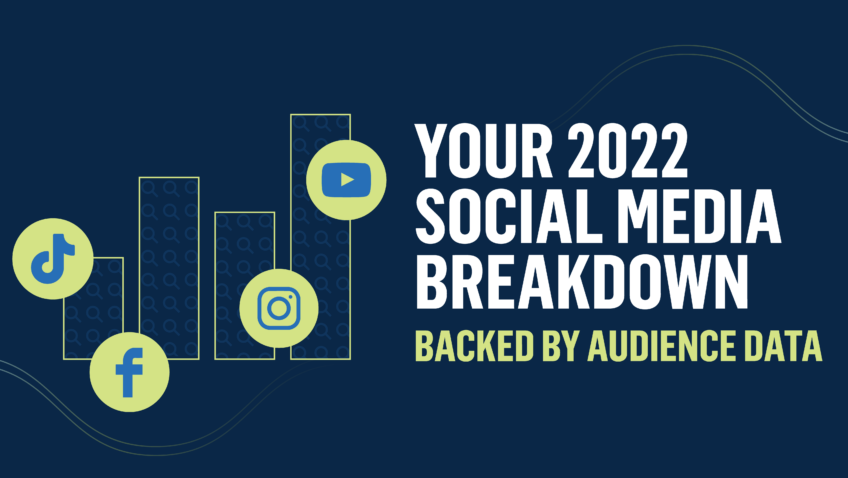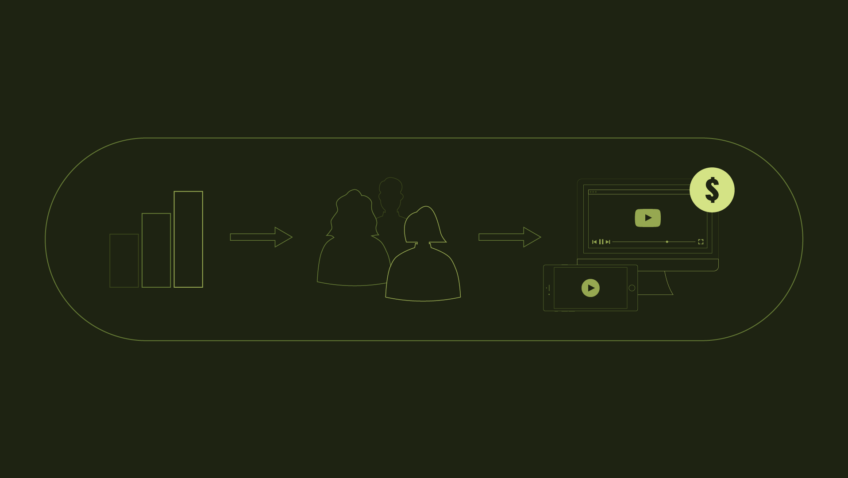Handling Negative Social Media Comments
Ask the Industry
One thing we love about working with the arts community is the field’s willingness to share successes, challenges, and learnings. Most often, this happens at conferences. Instead of only connecting at sporadic events throughout the year, we decided to create a year-round forum where we can learn from practitioners. This forum will provide insight into commonly asked questions and give an opportunity to share learnings and best practices. Enter: Ask the Industry.
We will feature arts marketing practitioners from organizations across genres and budget sizes. This is advice from arts marketers in their own words – we hope you can learn from them and it will spark new ideas at your organization.
This month, we’re asking, “How do you handle negative comments on social media?” Christopher George (The Kennedy Center), Mary Alice Hartsock (Academy of Natural Sciences of Drexel University), and Amy Hildebrand (Cincinnati Opera) answer everything from protocol to turning negative comments into something positive.
How do you handle negative comments on social media?
Christopher George (The Kennedy Center): We determine our approach based on a comment’s apparent intention, language, and placement. If we sense a complaint that can be turned into a neutral or positive experience with personal customer service, we’ll do our best to redirect the commenter to a private channel and respond accordingly. If there’s frustration stemming from a misunderstanding of a policy or message, we’ll respond with a clarification publicly to provide guidance or clarity for others who might need it while also revisiting the root cause on our end.
Amy Hildebrand (Cincinnati Opera): We always discuss it amongst our team, and decide collectively how to move forward—whether we respond to the comment, address it privately, address it publicly, or just let it ride.
Mary Alice Hartsock (Academy of Natural Sciences of Drexel University): The Academy is home to more than 100 live animals that serve as ambassadors to the fascinating worlds of nature and wildlife. Over 90 percent of our animals are either non-releasable, rehabilitated wildlife or unwanted exotic pets that cannot survive in the wild. Our museum has received sporadic comments in the past about having live animals in captivity, and we have found that a personal, two-way conversation by phone is the most effective way to communicate our animals’ stories.
Social media marketing enables us to share our animals with a wider audience, including non-visitors who may not be familiar with our animals’ backstories or with their highly trained and amazing caretakers. This can lead to misunderstandings about our work. Our primary goal is to provide assurance that our animals are happy and healthy. We are continuing to respond to comments by phone whenever possible, through the high-touch, visitor-centric model we use in the museum.
Do you have an example of a negative comment turning into something positive?
Christopher George (The Kennedy Center): When tickets nearly sold out before public sale for a particularly high-demand performance, we had a flurry of negative attention on social media—particularly Twitter. Rather than relying exclusively on a public statement, we made it a point to reach out to each individual with a personalized response. The messaging from tweet to tweet was certainly similar, but not identical, and many patrons switched from expressing outrage to gratitude for that simple measure. There was no way to truly work around the fact that demand for tickets significantly outpaced supply, but a significant portion of the negative attention was assuaged as the heightened emotions died down. Missing that moment for personal outreach may have soured some patrons on us permanently, but responding swiftly and attentively went a long way.
Mary Alice Hartsock (Academy of Natural Sciences of Drexel University): Our followers can communicate concerns quickly, publicly, and somewhat anonymously. This fast-paced model is pushing us to expand our understanding of what good customer service looks like in a channel that can be extremely impersonal. Our team is learning to address questions and concerns more efficiently and methodically. In part because of negative comments on social, we are having important conversations about customer service, and our marketing and education teams are learning even more about each other’s goals and challenges. We are developing a process that meets everyone’s needs, eliminating silos that can often impede our progress. And of course we continue to keep our animals’ needs top of mind in everything we do!
Our followers can communicate concerns quickly, publicly, and somewhat anonymously. This fast-paced model is pushing us to expand our understanding of what good customer service looks like in a channel that can be extremely impersonal.
— Mary Alice Hartsock
Has your department created an “official” protocol around this topic? If yes, how did you go about putting this together?
Amy Hildebrand (Cincinnati Opera): We have an unwritten agreed-upon method of response. It stems from who we are as a company—we try to be open and allow conversation, but do not want to encourage offensive or personal attacks.
Mary Alice Hartsock (Academy of Natural Sciences of Drexel University): Our public relations director has been meeting with our education team and our digital team to develop a protocol. The following is very much a work in progress.
Our digital team’s priority is to respond quickly to private messages and public comments, acknowledging receipt and requesting phone and email through a private message so that our educators can reach out directly. We then email this information to our public relations director and live animal care team, and they determine next steps—usually reaching out to the commenter by phone or email, or via private message through our digital team within 24 hours. Our public relations director is currently working with our educators to develop written statements about our animal care that will directly address some of our visitors’ most common concerns. Our team will collectively determine how (or if) they will be used on social media.
Do you ever delete and/or report negative comments?
Christopher George (The Kennedy Center): We tend to quietly allow negative comments when they present a reasonable critique artistically, as tastes and sensibilities are subjective wherever art is involved. However, when comments veer into incendiary or vulgar terrain—or begin to provoke or disparage other commenters—we may hide them to staunch further negativity from the original commenter or otherwise. Additionally, in the case of promoted posts specifically, we may hide comments that markedly distract from the content or purpose of the paid campaign. Banning is almost never employed unless a commenter is repeatedly crossing one of these lines or is clearly posting from a spam account.
Taking things too personally (or shrugging them off as simple trolling) can rob you of the change to salvage a patron’s experience or make a meaningful improvement to your practices.
— Christopher George
Mary Alice Hartsock (Academy of Natural Sciences of Drexel University): We recently saw an uptick in comments when we had a special exhibit featuring live animals. Our digital team asked for guidance from our team at Capacity Interactive and colleagues from local cultural institutions. Some had policies posted on their websites or in their profiles, some hid comments featuring profanity, some worked with external influencers to respond to negative comments, and some responded publicly and directly when the situation warranted it. With this guidance, we decided to hide any comments featuring profanity and respond to negative feedback offline on a case by case basis.
Amy Hildebrand (Cincinnati Opera): It all depends on the comment. If someone has a legitimate point or complaint, we address it. We rarely hide comments – only if they are offensive or personally attack an individual or group.
What advice would you give to another arts administrator about receiving negative feedback on a public forum?
Mary Alice Hartsock (Academy of Natural Sciences of Drexel University): If you’re like many arts marketers, you’re likely balancing the fast-paced social media world alongside many other tasks. Could you serve as an initial point of contact for the commenter and ask another team member to coordinate a response? If it is your job to coordinate a response, is there something you can put in writing and have on hand if similar issues arise in the future? If you do choose to respond, do so promptly. Consider whether responding publicly is the right thing to do in your situation, or if that will just amplify the negative feedback. Would a private message (or no message at all) be a wiser choice?
Amy Hildebrand (Cincinnati Opera): It is a public forum, and allow it to be that. Allow people to have a voice and when there’s an opportunity turn a negative comment into a productive or positive conversation, let it happen.Most importantly, if it’s necessary for your company to respond, try to hear their side of the story and respond with genuine empathy.
Allow people to have a voice and when there’s an opportunity to turn a negative comment into a productive or positive conversation, let it happen.
— Amy Hildebrand
Christopher George (The Kennedy Center): Remember the forces that compel people to comment and challenge yourself to consider when criticism may be warranted. Comments are often more severe in tone than individuals might actually intend, and taking things too personally (or shrugging them off as simple trolling) can rob you of the chance to salvage a patron’s experience or make a meaningful improvement to your practices.









